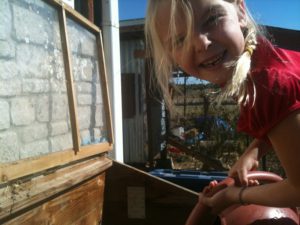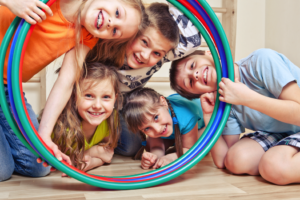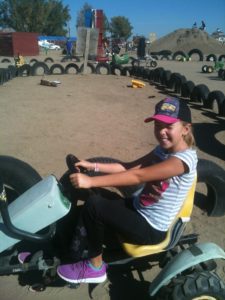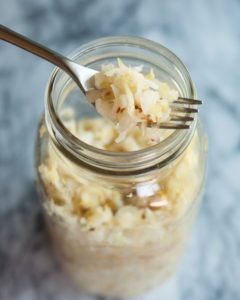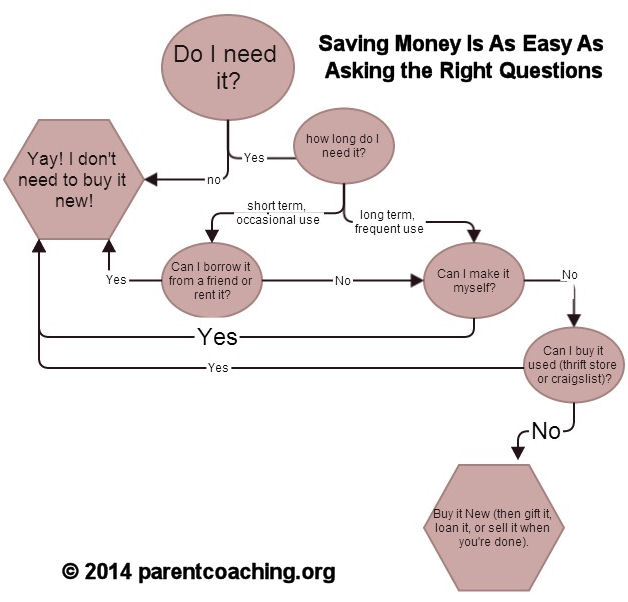Does talking with your spouse or kids leave you feeling drained or overwhelmed? Do you want to retreat, eat chocolate cake, or go for a long solo bike ride after spending time with them? Do you notice that you don’t even want to go home sometimes?
While this may happen to all of us sometimes, if it happens often you may be taking their upset or challenges too personally. While it’s nearly impossible to be completely unruffled by someone you live so closely with, you can take steps to make it easier to both listen deeply and keep your own sanity.
Step 1: Mindfulness
Notice what you are feeling. Ask if this is your emotion. Are you taking on someone else’s work, emotion, or baggage?
Step 2: Discernment
Closely linked with mindfulness is noticing you have choices. What do you want to do right now? Many of us often try to help by absorbing and trying to fix or heal someone’s else’s upset. Rarely does this actually help and tends to disempower all involved. Very often the kindest thing you can do is sit with someone while they feel their feelings with no need to change, fix, figure out, or take them personally. If you think there’s even a possibility that that’s true, try the following exercises and see if they work better than absorbing or fixing someone else’s upset.
Step 3: Practices to Keep Your Ground
Exercise 1 – Energetic Shield: Stand up and feel your feet on the ground. Run your hands in front of you. Imagine you are putting an energetic shield in place. This shield protects you from absorbing or getting exhausted by the person you are listening to. It can let in anything that you need to feel and hear. It can keep out and deflect back to your partner anything that is theirs and that they need for their healing.
The energetic shield is very useful when your spouse, co-workers, or children are expressing their upset. Take a deep breath and move your hands in front of your face, heart, belly, and as far down your legs as you can reach. After some practice, you can do a smaller motion that doesn’t seem as obvious. You can also use it when you’re in an environment that seems negative and out of your control (i.e. doctor’s office with TV playing or your in-laws house when they start to bicker).
With someone you know, you can actively put your shield up with them. Let them know you’re putting your shield up. Pause the conversation and do the motions. This may actually help them feel safer to talk to you because they know they won’t be dealing with the fallout of your overwhelm after you listen to them.
Exercise 2 – Compassionate Presence: Imagine you are pure compassion and empathy. You have no need to change, fix or figure out the person who’s talking to you. You trust they are the experts on their own life. You trust them to figure out their own path and that the kindest and most loving thing you can do it listen to them with complete trust and love.
You may also notice that parts of you get stimulated by their pain. This is what makes it hard to offer compassion to your intimates. Your lives are so intertwined that their pain triggers your own. Hold the pain within you with compassion as well. What if it was OK to just notice it without need to fix, figure out or change? What if you could also ask for compassionate listening time with your partner, a friend, or parent coach?
Exercise 3 – Listen for Feelings and Needs: Compassion, reflective listening, and guessing at feelings and needs are powerful tools for finding our share humanity and creating more understanding. The form is simple: Reflect back what you heard and guess at what the person is feeling and needing. Doing it well takes a lot of practice. Luckily, living in close proximity to other human beings isn’t easy and gives us lots of practice.
Let’s take a common situation. I said I’d bring home milk and I forgot. When I get home my partner is upset that I forgot the milk.
Partner: I can’t believe you forgot the milk. You said you’d bring it home. I can never count on you. Now what am I going to do for dinner? You know I needed it to make the sauce.
Me: I hear you’re really upset and frustrated. You’ve put effort and energy into dinner and you want that energy to mean something. You really want to know your needs are going to be met and right now you’re not sure they will be.
Partner: That’s right. My day’s been so hard. Everything I did with the kids took much longer than I expected. I’m late with dinner. And we didn’t even enjoy being together. Why am I staying at home with them anyway? You’ve got it lucky that you get to work with people who actually want to hear what you have to say.
Me: I hear you really want to be listened to and valued. Some days it’s hard for you to be home with the kids and today was one of them. Are you looking for relief, understanding, and support?
Partner: Yes! (and then you forgot the milk….)
This dialogue would likely go on for some time, especially if this way of listening is new to your partnership. Over time, you’ll each come to trust it more.
An important thing to remember is that I (and you when you’re in this situation) have choices again and again in this dialogue. Put yourself in ‘my’ place as you read the following ways I could choose to hear my partner’s words…
- How I hear: I can hear my partner’s words as personal criticism.
- How I react: Then I tend to attack or defend myself.
- How I hear: I can hear my partner’s words an indication of a problem beyond my partner’s ability to solve.
- How I react: Then I tend to problem solve and offer solutions.
- How I hear: I can hear my partner’s words as an indication that they are about to quit and go get a job and put the kids in school.
- How I react: Then I tend to react with my own preferences and fears/agendas for how the home and childrearing happen.
- How I hear: I can hear my partner’s words as proof that I’m not going to get the compassionate listening that I need. Maybe I had a hard day too? Maybe I get worried that my partner needs all the attention and I never get to show my own vulnerability.
- How I react: In this case, I’ll tend to react with irritation, withholding my compassion and just wishing my partner wasn’t so needy.
Any of these reactions are unlikely to lead to the closeness and connection I really desire with my partner.
Listening from compassion works so much better. When I beam trust and love at my partner. When I sit with him as though he is beautiful, capable, and I love him. When I listen as though I’m hearing a story that has a great ending, then my energy totally shifts. I’m able to evoke that energy in myself (caring, loving, beautiful) and in my partner. The whole dynamic changes based on how I listen and how I offer my presence.
And remember – It’s really not about the milk.

